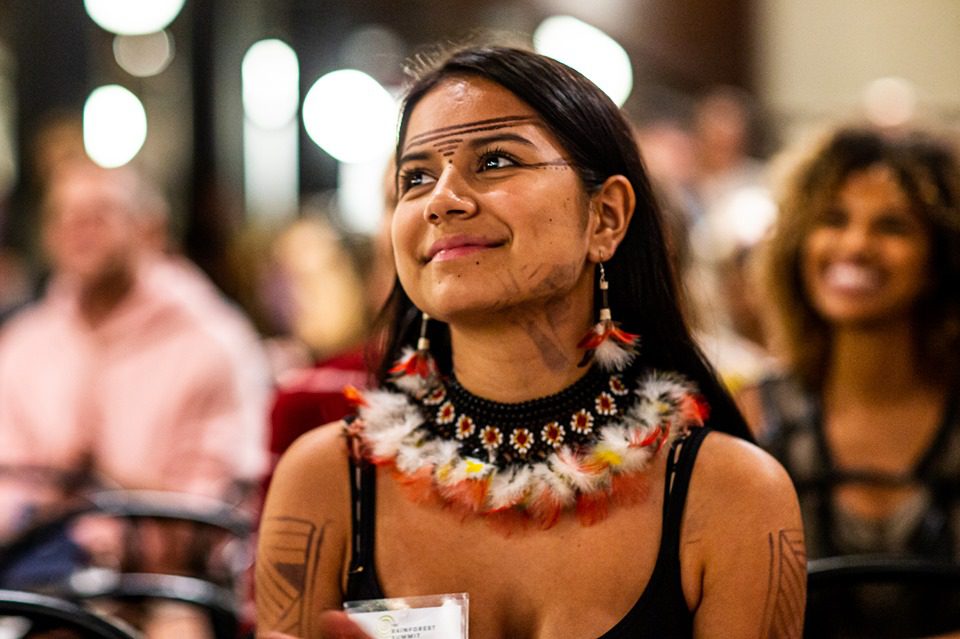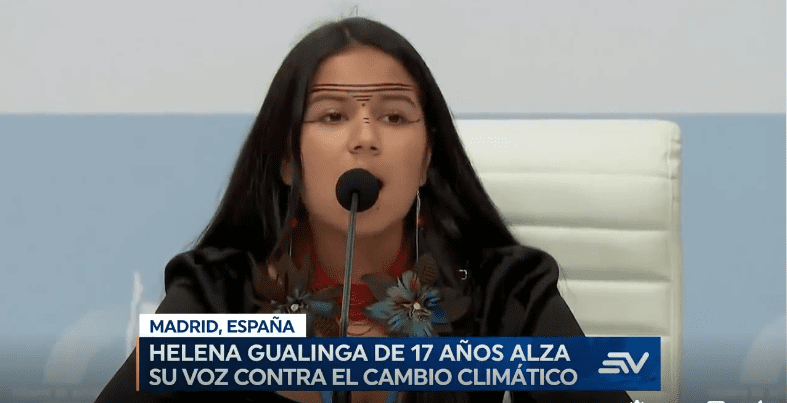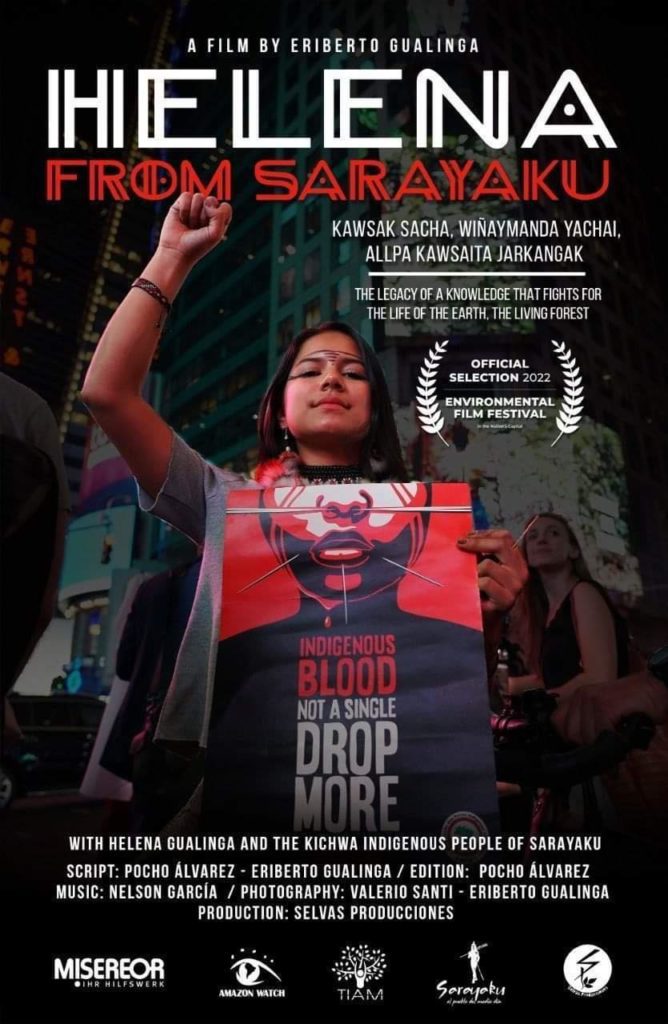Helena from Sarayaku traces the Sarayaku Kichwa people’s struggle to protect their lives, cultures and their territories from oil extraction in the period 2002 to 2021. It is both an anthropological study conducted by indigenous people for indigenous people, and for the world, and a vehicle to demonstrate the contribution of indigenous peoples to protecting the planet.
The film is a sequel to Sarayaku Kichwa Eriberto Gualinga’s documentary Children of the Jaguar of 2012, which told the story of the Sarayaku community’s twelve-year struggle to prevent the Argentinian oil company CGC, and La Petrolera Ecuador San Jorge SA, from prospecting and drilling for oil in their territory. That struggle culminated in a ruling in the community’s favor and against the Ecuadorian government at the Inter-American Court of Human Rights in 2012 for failing to consult with indigenous communities when it had approved the project in 1996.

Helena of Sarayaku is almost entirely in Kichwa, with subtitles, shot mainly in the Amazon rainforest, containing stunning footage of wildlife and landscapes. The focus is on Helena’s own interviews in Kichwa with the village elders, who explain their beliefs and traditions, their resistance to contamination by oil, and the importance of maintaining ecosystems.
Their philosophies of sumak kawsay, living in harmony with nature/buen vivir, and kawsak sacha, the living forest, are conveyed in their own voices, through which they explain that humans and nature are one: the animals, the forest, the rivers, the earth, are all interdependent, and their protection is necessary for the continuation of indigenous and all human cultures. “If we take care of the Earth, the Earth will take care of us.”

The film follows Helena’s journeys from the Sarayaku village on the banks of the Bobonaza river, a tributary of the Amazon, in Pastaza province, to and from Scandinavia, the region of her Swedish father, and to her university in Finland. Helena is shown at age 18, moving easily between two worlds, speaking in Kichwa in her village with her community, and in English at advocacy events in New York, during New York Climate Week in 2019. Helena emerges as a leader, demonstrating on the streets of Manhattan in the company of other indigenous leaders from the American continent, with her aunt Patricia Gualinga — another indigenous ambassador for indigenous peoples and the rights of nature — with Nemonte Nequimo and Alicia Cawiya of the Waorani peoples of Ecuador, and with Sonia Guajajara, a leading Brazilian indigenous rights activist from Maranhao.

In Sarayaku, Kichwa elders, including her wise grandfather, the late Sabino Gualinga, explain to Helena that they understand that Western civilization, and oil extraction, with its accompanying building of roads, spell destruction of the rainforest, their communities, and the Earth. The much-revered shaman died at the age of 97 on Feb. 7, 2022. His longevity is an indication of the benefits of living in harmony with nature in the forest.
Helena’s elders encourage her in her quest to convey the indigenous message to the urban citizens of the world that their lives have to change for the protection of all of us. “Take these voices to other countries so they will listen, speak this message in their language when you get there.”

“We defend our territory so the great destroyers of the Earth do not come,” explains one of the elders. Thanks to the struggle of the Sarayaku, “everything that our elders left us is intact,” but “others lost their cultures, and they will never get them back…[the companies] will build the road, the rainforest will be destroyed. They will contaminate the rivers. The world is coming to an end as our ancestors predicted… they destroy it without being aware of it. We cannot go on like this.”
As Patricia Gualinga explains, “The governments have not done well… we have turned the earth into foam.” The message is that we need to heed the advice of the peoples of the Amazon to save ourselves: in the words of Helena Gualinga, “It is time that we wake up.”
The film will be available to stream for FREE from March 18 – March 27, as part of the Environmental Film Festival in the Nation’s Capital #DCEFF30
Link to watch the film: https://buff.ly/363M9ov
Linda Etchart is a lecturer in Human Geography at Kingston University and the author of Global Governance of the Environment, Indigenous Peoples and the Rights of Nature: Extractive Industries in the Ecuadorian Amazon and a contributor to The Routledge Handbook of Environmental Movements. She was also the author of “The Condor & The Eagle Takes Flight” in The Esperanza Project.
Eriberto Gualinga Helena from Sarayaku Helena Gualinga Sarayaku